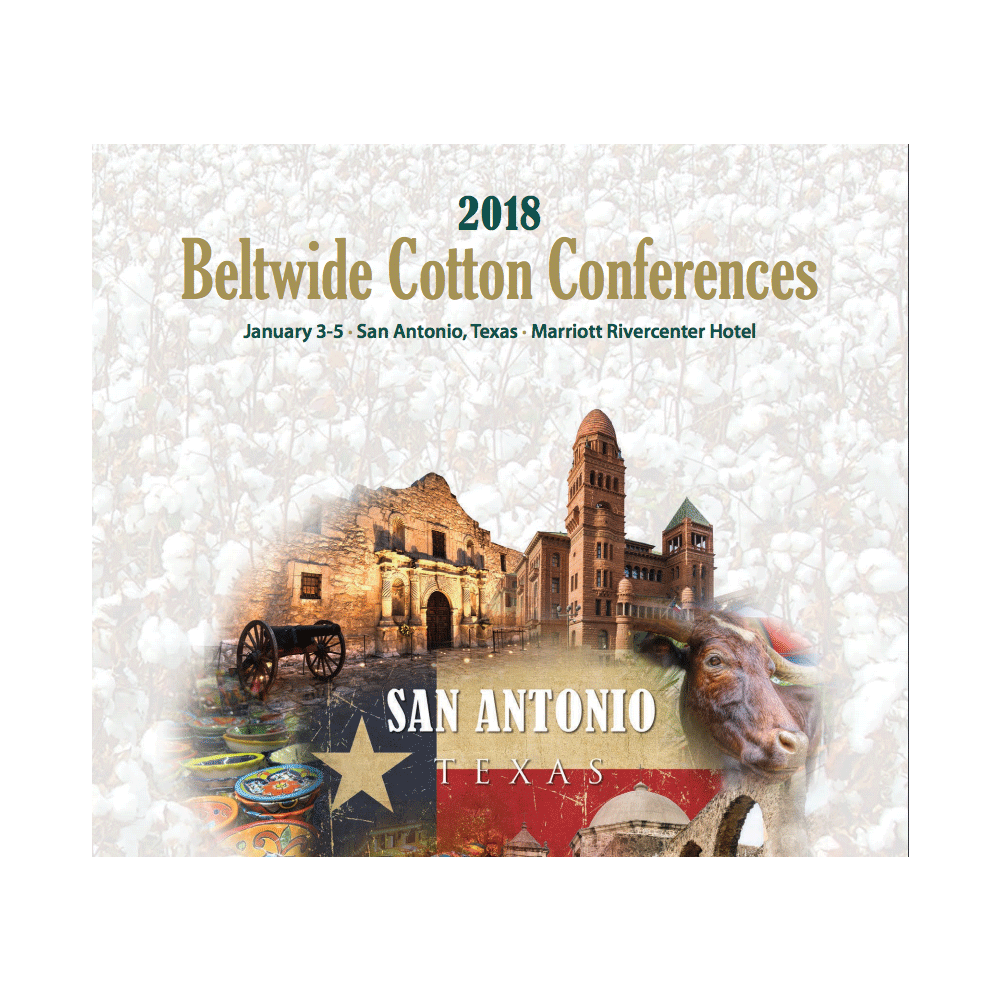As the market leader in supply of Purified Cotton to the global nonwovens market, Barnhardt has led the way in communicating within the industry about the extraneous contamination found in the US cotton crop.
Tom Robinson (Director of Operations & Product Development) for Barnhardt Natural Fibers Group attended and presented at the recent National Cotton Council Beltwide Conference held in San Antonio, Texas from January 3 – 5, 2018. Tom was part of a panel from across the US selected to speak about the experiences Barnhardt has had with extraneous contamination in the raw material they receive.
Barnhardt was invited to participate in a panel discussion regarding contamination found in cotton and how it is affecting Barnhardt, our customers, and the markets we serve as the leading supplier of Purified Cotton to nonwovens globally.
Several years ago, John Deere Co. developed a new process for making cotton modules during the cotton harvesting process. Deere designed this innovation to reduce costs for the farmer when picking the cotton and prior to delivery to the cotton gin. These modules are round versus the rectangular modules that have been used in the industry for many years. Additionally the round modules are covered with a synthetic fabric, usually bright yellow in color.
The problem developed because the cotton gins (approximately 650 across the US) were equipped to handle the rectangular modules but not the round ones. As a result, many of the gins experienced problems in the removal of the yellow plastic (sometimes pink, blue, or other colors) and some of the plastic would get caught up in the cotton during the ginning process.
As the consumer demand for cotton in hygiene products has grown and spurred higher production levels, the plastic contamination began appearing in the nonwoven fabrics, creating supply stream issues. As with any problem, creating awareness initially is critical, asmost farmers and ginners were not aware that this was a problem or how it could be a problem. We reached out to the National Cotton Council as well as the USDA and Cotton Incorporated, to again create awareness of the contamination and to seek assistance in eliminating it.
Other sources of contamination could be litter that either blows into cotton fields or is thrown into them by passing cars. Additionally, in some areas of the country, growers plant cotton behind another crop that has used black ground cover. Most farmers will remove the associated plastic prior to planting cotton, but some farmers don’t – which leaves the opportunity for fragments of this black plastic to get caught up in the cotton during the harvest.
At Barnhardt, we have a multi-faceted approach that includes educating the cotton farming and ginning community, such as Tom’s participation in the Beltwide Conference panel discussion and working with our suppliers to identify farmers and cotton gins that are aware of the issue and are working to eliminate extraneous contamination.
Finally, Barnhardt has taken many precautions throughout our purification process to identify extraneous contamination and remove it prior to our customers receiving it.
